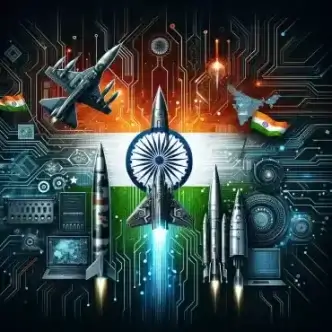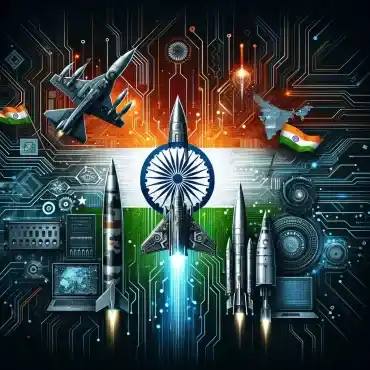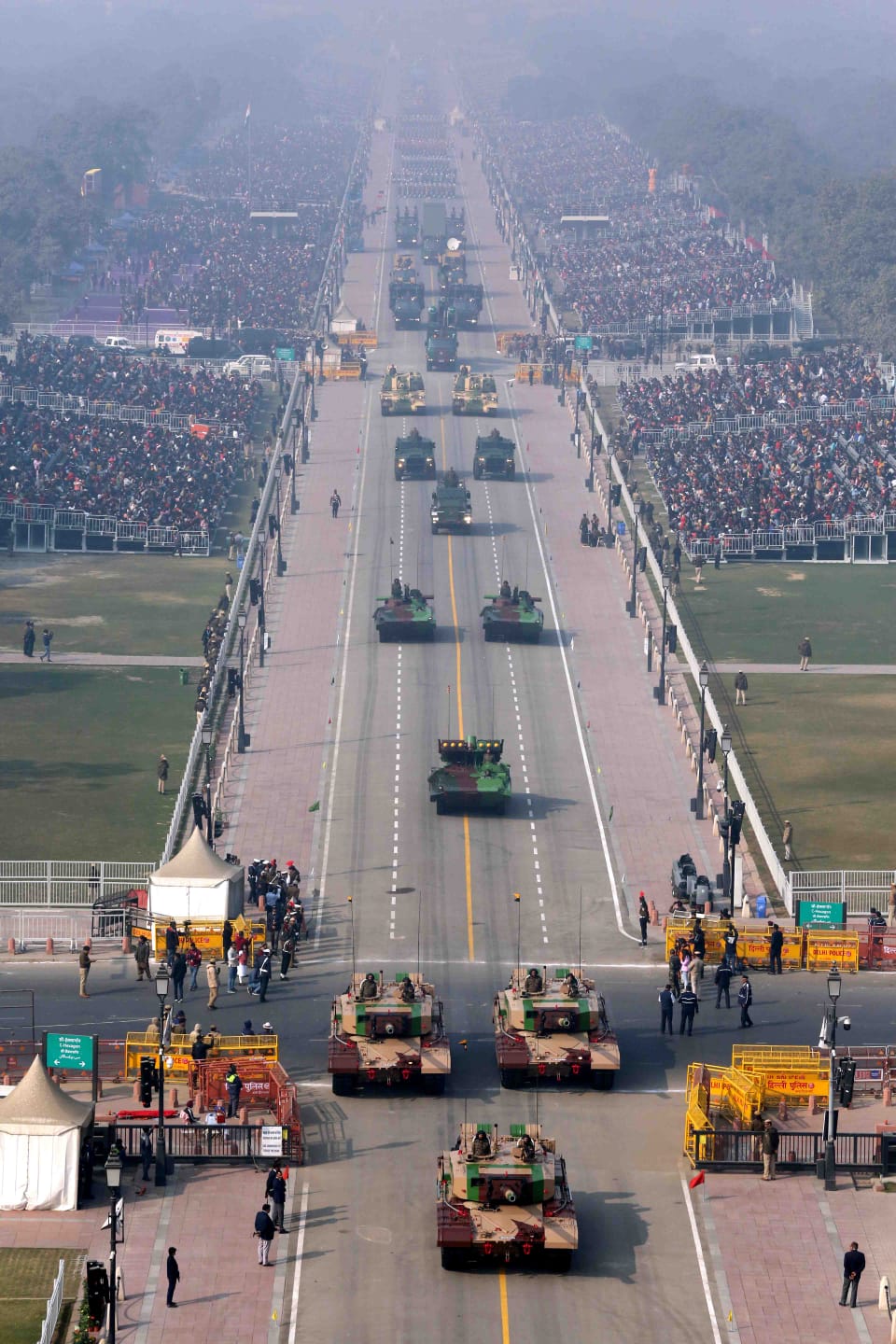Key Technologies Displayed: A Closer Look at DRDO’s Defense Innovations
- Man Portable Anti-tank Guided Missile (MPATGM): Imagine a soldier in the field, carrying a missile system on his back, capable of taking down the most formidable tanks with precision. This is the essence of DRDO’s MPATGM. A marvel of engineering, it is a third-generation fire-and-forget missile, lightweight yet lethal. With a range of up to 2.5 km, this missile can strike with pinpoint accuracy, making it a game-changer on the battlefield. Its state-of-the-art thermal imaging seeker ensures that no target is beyond reach, whether in the heat of day or the dark of night.
- Agni-5: Agni-5 stands as a pillar of India’s strategic defense. This surface-to-surface ballistic missile stretches the boundaries of technology with its intercontinental range, capable of reaching targets thousands of kilometers away. As a nuclear-capable missile, Agni-5 is not just a weapon but a symbol of deterrence, a guardian of peace in a world of uncertainties. Its successful deployment marks India’s entry into an elite club of global military powers, possessing advanced long-range missile capabilities.
- ASAT Missile from Mission Shakti: The ASAT Missile is a testament to India’s prowess in space warfare. Launched under Mission Shakti, it has positioned India as one of the few nations capable of neutralizing satellites in orbit. This anti-satellite capability is a significant leap in space technology, providing India strategic autonomy and a protective shield in the extraterrestrial realm.
- Air Defense Systems (VSHORADS & QRSAM): The skies over India are safer with the deployment of VSHORADS and QRSAM. These air defense systems are the country’s shield against aerial threats, providing a protective dome over strategic assets. VSHORADS, with its capability to neutralize low-altitude threats, and QRSAM, offering quick reaction against aerial targets, together weave a multi-layered defense network in the sky.
- Naval and Cybersecurity Technologies (NASM-SR & Shakti): On the maritime front, the NASM-SR stands as a sentinel, safeguarding India’s vast coastline and naval assets. This anti-ship missile, tailored for short-range engagements, ensures that any adversarial naval threat can be swiftly neutralized. In the digital domain, the Shakti electronic warfare system and advanced cybersecurity measures fortify India’s defense against the ever-evolving cyber threats, ensuring a robust defense in both the physical and digital worlds.
These technologies, showcased by DRDO, are not just weapons; they are symbols of India’s growing technological might and its commitment to self-reliance in defense. Each innovation tells a story of ingenuity, determination, and a vision of securing the nation’s future in an increasingly complex global landscape.
LCA Tejas and Advanced Radars: A Glimpse into Indigenous Innovation
The LCA Tejas, a cornerstone of India’s aviation technology, stands out as a remarkable example of indigenous development in the field of combat aircraft. Conceptualized by the Aeronautical Development Agency (ADA) and manufactured by Hindustan Aeronautics Limited (HAL), the Tejas is a single-engine, delta wing, multirole light fighter designed for both the Indian Air Force and Indian Navy. It’s not just a fighter jet; it’s a symbol of India’s growing prowess in aerospace technology.
The Tejas boasts impressive specifications and capabilities:
- It’s a supersonic aircraft, reaching top speeds of Mach 1.8.
- The aircraft is relatively lightweight, enhancing its maneuverability.
- It has a significant range of around 3,000 km, making it a formidable aircraft for various missions.
- Equipped with advanced avionics and capable of carrying a range of weapons, Tejas is versatile in both air-to-air and air-to-surface combat scenarios.
One of the most critical advancements in the Tejas is its integration with the Uttam Active Electronically Scanned Array Radar (AESAR). This radar system, another indigenous marvel, represents a significant leap in radar technology. It’s a multi-mode, solid-state radar, designed to provide Tejas with unparalleled situational awareness and targeting capabilities. The Uttam AESAR enhances the aircraft’s ability to detect and track targets, contributing to its effectiveness in combat situations.
The Tejas, with its state-of-the-art technologies, not only bolsters India’s defense capabilities but also marks a milestone in the journey towards self-reliance in defense technology. Its deployment in the Indian Air Force and the potential upgrades with the GE 414 engine for the Mk II variant further underline its evolving nature and adaptability to future combat requirements.
The LCA Tejas and the Uttam AESAR radar system are shining examples of India’s capabilities in developing advanced military technology, reflecting the country’s commitment to achieving ‘Aatmanirbhar Bharat’ or a self-reliant India in defense.
Source: https://twitter.com/lca_tejas_/status/1750725153921843662/photo/1
India’s Defense Evolution and the Power of Public Display
The 75th Republic Day parade, showcasing a range of advanced defense technologies, marked a pivotal moment in India’s journey towards becoming a formidable defense power. The display of systems like the MPATGM, Agni-5 missile, ASAT from Mission Shakti, and the advanced air defense systems (VSHORADS, QRSAM), along with naval and cybersecurity technologies, is not just a demonstration of military might, but a declaration of India’s self-reliance and technological capabilities.
The Light Combat Aircraft Tejas, a symbol of India’s aerospace innovation, and the Uttam AESAR, an advanced radar system, underline the significant strides made in indigenous technology development. These advancements, developed by organizations like DRDO, are not just tools of defense; they are beacons of India’s growing independence in defense technology, reducing reliance on external sources.
The public display of these technologies serves multiple purposes. It instills a sense of national pride and confidence in India’s defense capabilities among its citizens. It also sends a strong message to the international community about India’s evolving role as a major defense player capable of developing sophisticated technology indigenously. Furthermore, this exhibition on a national platform like the Republic Day parade was a strategic move in diplomacy and international relations. It subtly communicated India’s readiness to defend its interests and contribute to global security dynamics.
In essence, the Republic Day parade was a reflection of India’s journey towards ‘Aatmanirbhar Bharat’ in defense technology – a journey that is about more than just developing weapons systems; it’s about cultivating a culture of innovation, strategic independence, and global leadership in defense technology.
____________
Written by: TEChquity India













